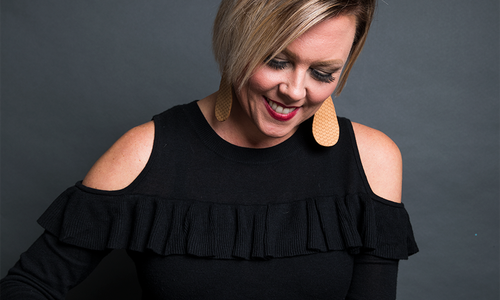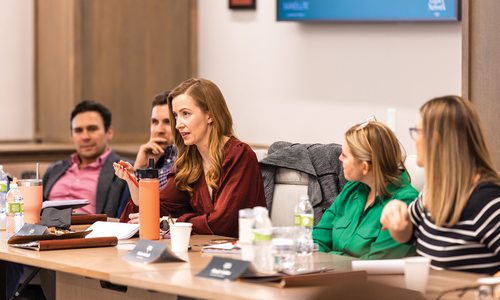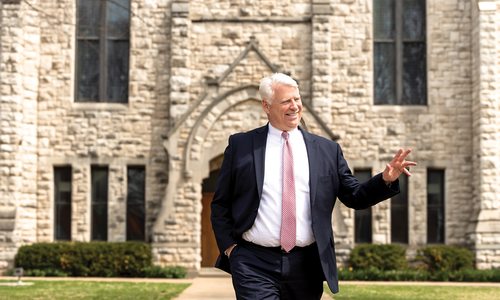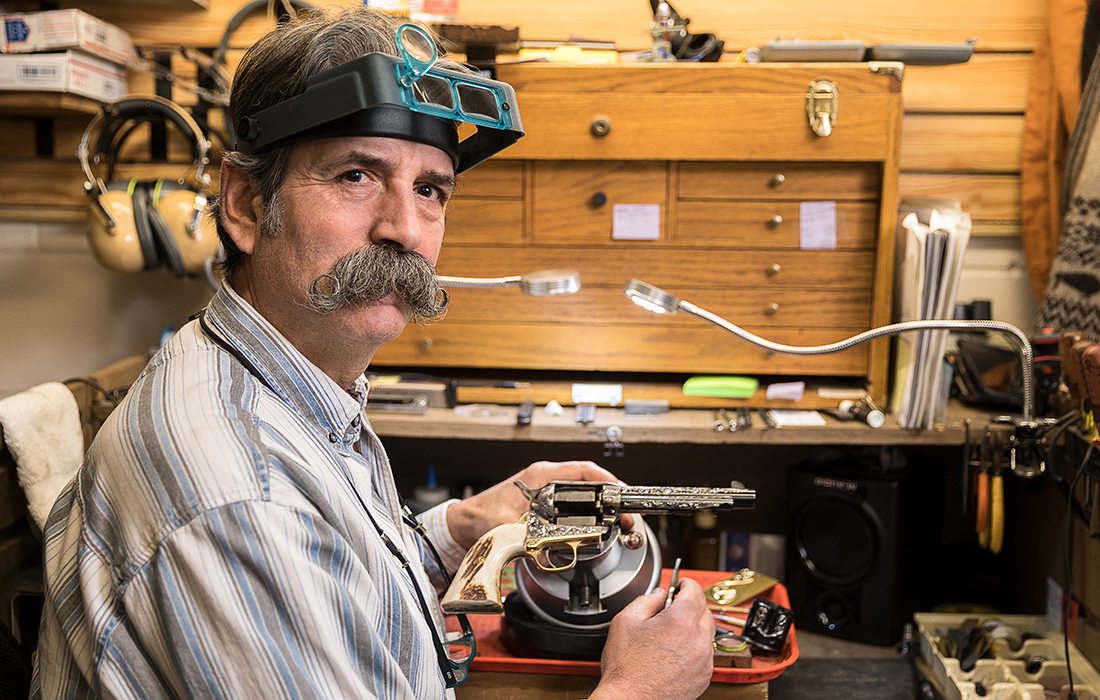
Small Businesses
Craftsman Jim Downing Mastered Gun Engraving and then Marketing
Jim Downing has been engraving for decades. First it was ivory, then knives. Now it’s guns. Just don’t call him an artist.
By Peyson Shields
Mar 2018

With a push of a hand-held impact hammer, Jim Downing takes an otherwise plain pistol or revolver and turns it into a coveted piece of art. Although art it might be, Downing—better known as The Gun Engraver, who set up shop in Cherokee Firearms in Springfield—considers himself a craftsman, not an artist. “I approach [engraving] as a craft rather than art,” he says. “The difference is, craftsmen always make money and artists never do! I’m a craftsman. I engrave every day, come hell or high water.”
His craft started when he was showing at art shows. “I would sit in a booth and engrave,” he says. “It didn’t take long, and people were coming over to watch me.” Downing then expanded his outlet from art shows to gun shows, even attending the World’s Fair in 1984. But in the early ’90s, a popular movie brought out a new customer base. “Cowboy shooting has been around the country since the 1960s, but Tombstone kicked it into high gear,” he says.
Adorned in 1880s Western attire—chaps, vests, hats and, of course, firearms—Cowboy Action Shooters are who Downing was drawn to, so naturally, he homed in on his clientele. Beyond seeing cowboy shooters as customers, he also saw them as a peer group and began participating in events—even donning his own alias, Scratch. When he’s not traveling the world as Scratch or mesmerizing attendees at cowboy shows, he’s engraving two guns per week and teaching engraving classes at Cherokee to eager hobbyists. “Only a few of us in the country make a living at this,” he says. “I can teach you in a week how to do it, but it’s going to take you years to master it.”
Engraving isn’t the only thing Downing has mastered in his 38-year career. He attributes his success to being on the forefront of marketing. His website, which he launched in 1993, is one of those tactics. Along with advertising in industry-specific publications and now social media, he’s grown his audience and built brand recognition. “When you’re selling something you love, it’s easy,” he says. “People are buying me just as much as they’re buying the product.”
Behind the Business
Date Opened: 1979
Number of Employees: 1
Mind to Market: “I’m a year behind on work. Once I’m ready for [a customer’s] gun, I’ll have them send it to me, I’ll finish it in a week or so and send it back.”
Most Popular Item: American floral scroll from the 1880s
Maker’s Choice: “I love engraving on old guns and being able to be in a place where I can choose my clients.”
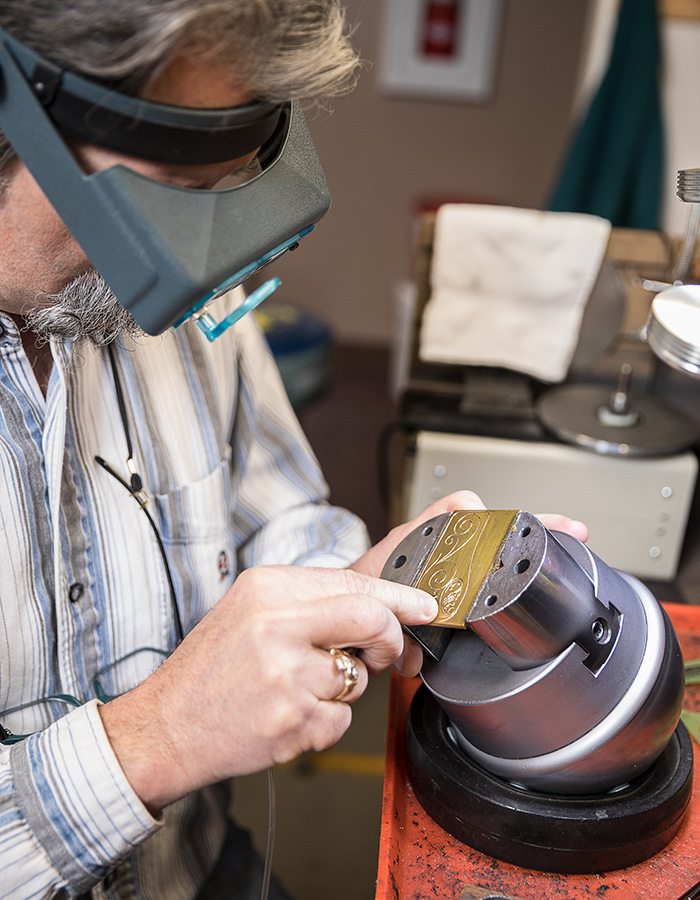
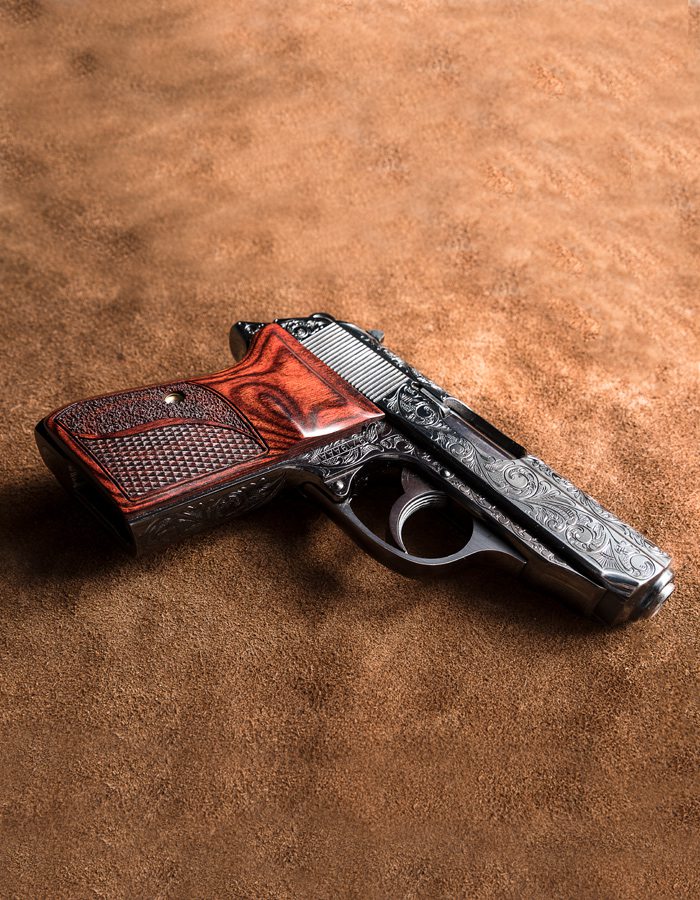
Behind the Design: The Gun Engraver
The Gun Engraver, Jim Downing, walks us through how he takes a gun from traditional to custom.
Even though Jim Downing has engraved thousands of guns in his career, he treats each one with as much carefulness as his first. His clients come to him wanting his specific style—1880s American floral scroll, to be specific—of scrolls and leaves that weave together to form a beautiful design. Each gun has a different layer of detail, not to mention different price tag. Although his average gun design costs about $1,200, the intricacy of each design can expand the price from $55 to $2,000. The lower end of that pricing spectrum is typically what hooks his clients—that’s the backstrap of the gun, which he will do oftentimes while traveling at shows. From there, his clients reach out to have Downing put his personal touch on their firearm. The wait for an engraved gun is more than a year, so once Downing gets it, he goes right to work.
In his engraving classes, he teaches the basics in the classroom before even touching chisel to metal. Similarly, the basics he starts with prior to any project are his tools. “There are really three main tools that go into engraving,” he says. “The chisel, engraving ball and sharpener. Having a sharp chisel is the key to clean cuts.” The chisel Downing uses is called an impact hammer, which is a small hand-held hammer, the size of a small pencil, that is pressure activated. “When I learned in 1979, I was using a hammer and chisel,” he says. “That same year, the impact hammer came out.” The impact hammer is his singular tool that creates every design—regardless of size.
“On occasion, I will start with a piece of metal to figure out what I’m going to do,” he says pointing at a small metal plate, attached to the engraving ball, with a similar shape to one that’s on an 1897 rifle he’s working on. “I can’t draw, but I can engrave. So this lets me lay out what I’m going to do.”
Pre-engraving is his own form of sketching, but Downing tends to freehand all of his designs more often than not. Starting only with small circles made with a stencil onto the gun or engraving surface, he then uses his impact hammer to adorn the gun with his signature style.
“That and that,” he says pointing at two circles, one small and one large, “are going to be a scroll. This helps me gauge what I have for spacing, and then I can go from there.” Three to four days later of circles and scrolls, the gun is complete. Depending on the customer’s request, it’s then returned or sent to be repainted. No matter if Downing’s designs are a cowboy shooter or a prop for Hollywood movies, he gives them the same attention detail.









